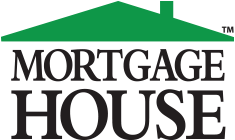Have we reached the end of this rate hike cycle?
For the sixth time in eight months – the third month in a row – borrowers have been slugged with a 0.25% rate hike.
This week’s interest rate rise was widely tipped due to the resources boom, property prices and a higher than expected inflation rate but economists’ views are now mixed regarding the Reserve Bank’s next move.
There is also some division amongst finance experts regarding the wisdom of this last official rise, which lifted the cash rate from 4.25% to 4.5%, its highest level since the end of 2008.
Herston Economics’ Chief Economist, Clifford Bennett refers to it as “another unnecessary rate hike”.
Bennett doesn’t mince words. “We were on the verge of the best economic period the nation had ever seen, and now that view has been put at risk by too aggressive rate hikes by the RBA, and the government’s proposal of the “dismal resources tax,” he said.
Maintaining that the RBA has hiked 50 points, perhaps 75 points too far at this stage of the recovery, Bennett said that while a move to 4.50% may have been appropriate later in the year, this early aggressive strategy by the RBA is likely to see growth diminished in the second half of 2010.
“While the export sector will remain strong regardless, RBA hikes were never going to have an impact here,” said Bennett declaring that as consequence the domestic economy will be tarnished.
“The reality is that these rate hikes will have negligible to zero impact on inflation outcomes for the rest of the year. All these rate hikes have done is make like tougher for Australian families with mortgages.
“What inflation there is, is a product of higher commodity prices, strengthening oil prices, and a simple rebound from the price cutting, property and retail, of the Global Financial Crisis. Nevertheless we continue to argue that self regulating competitive price pressures will absorb, via increased productivity, the higher input costs. The additional offset of a higher Australian dollar will also support our view that inflation will indeed remain in the RBA target range.”
Saul Eslake, the Grattan Institute’s chief economist throws his support behind the RBA’s latest move saying: “Providing you accept the RBA’s judgement that growth in the economy is returning to a normal pace after what turned out to be a much shallower downturn than they forecast, then what they have done is right.”
Eslake went on to say: “With yesterday’s increase the RBA has got rates back to ‘normal’.
“One of the lessons of the GFC ought to be that inappropriately low interest rates can be as dangerous as inappropriately high ones.
“The property bubbles that preceded the GFC happened in countries where the central banks left rates too low for too long after a recession at the beginning of the decade, that turned out to be milder than expected.
“One of the reasons why we didn’t have similar bubbles is because the RBA didn’t make that mistake. And they appear to be determined not to allow it to happen this time.”
The Real Estate Institute of Australia (REIA) takes an opposing view expressing concerns that the RBA has ignored evidence that interest rates should be left on hold.
REIA President, Mr David Airey said the rate increase does little to solve the real problem currently facing the property market, which is supply.
Airey is apprehensive about the impact interest rate movements will have on borrowers and those looking to enter the market, as well as on the broader economy.
He said: “The Reserve Bank may continue to increase interest rates in an effort to control house prices, however, while a lack of supply persists, and with demand continuing to increase, this is akin to putting a finger in a leaking dam.”
Is this the end of the RBA’s rate rising cycle? Will borrowers be granted a respite?
The consensus among economists is probably not.
